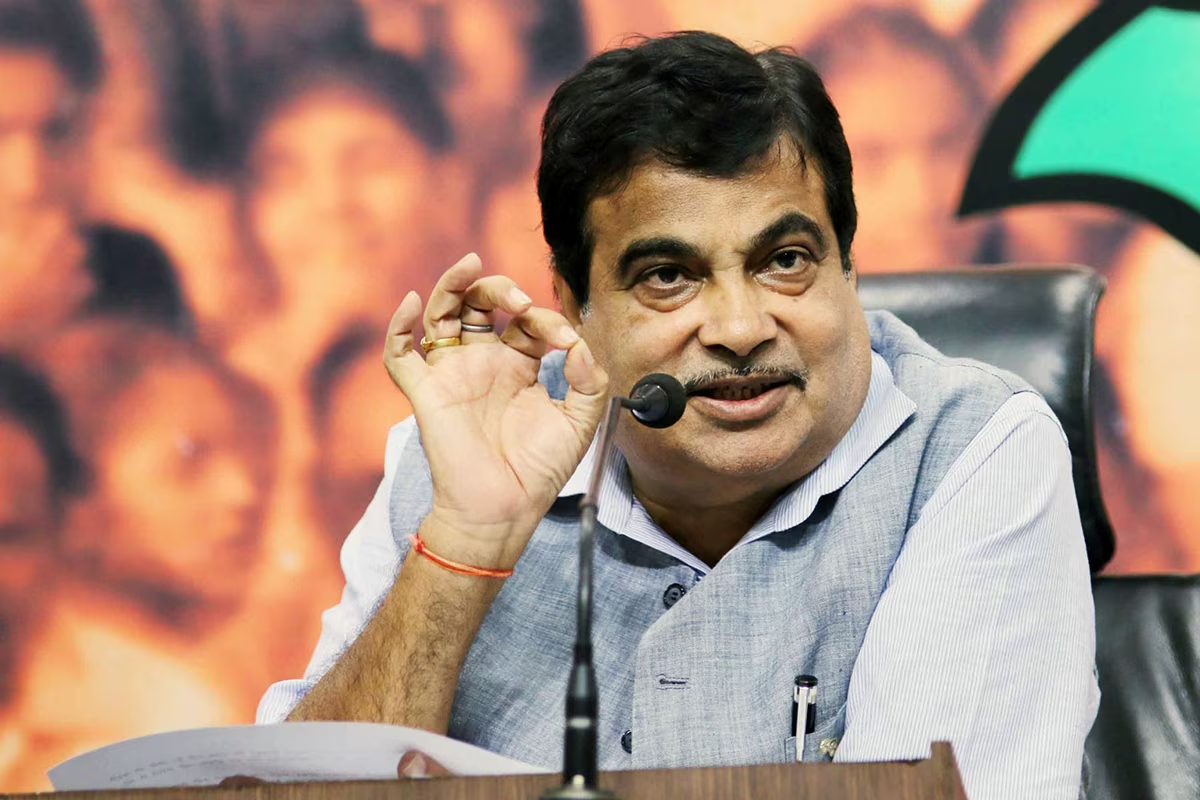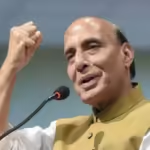Introduction : Minister of Road Transport and Highways
An important character in the story of India’s infrastructure development is Shri Nitin Jairam Gadkari, who will serve as Minister of Road Transport and Highways in 2024. Throughout his term, he has made a strong effort to develop innovation, adopt sustainable practices, and modernize and extend the country’s road infrastructure. This blog examines Gadkari’s biography, notable accomplishments, important policies, difficulties encountered, and prospects for India’s road transportation industry under his direction.
Early Life and Political Career
Nitin Gadkari was born in Nagpur, Maharashtra, on May 27, 1957. His political career began with early affiliations with the Bharatiya Janata Party (BJP) and the Rashtriya Swayamsevak Sangh (RSS). He earned his degrees in law and commerce, and before committing himself entirely to politics, he was involved in a number of different firms, demonstrating his entrepreneurial drive.
In Maharashtra, where he first served as a Member of the Legislative Council (MLC) and then as the Minister of Public Works, Gadkari’s political career really took off. The building of the Mumbai-Pune highway, India’s first six-lane concrete high-speed highway, during his stint as the Public Works Department (PWD) Minister of Maharashtra is especially noteworthy, as it established him as a visionary in the field of infrastructure development.
Role as Minister of Road Transport and Highways
India’s road infrastructure has undergone significant transformation under Gadkari’s leadership since his appointment as Minister of Road Transport and Highways in 2014. Building world-class roadways, enhancing traffic safety, and incorporating sustainable construction methods have been his main priorities. During his leadership, important programs and policies included:
Bharatmala Pariyojana:
The ambitious Bharatmala Pariyojana road and highway construction project was initiated in 2017 with the goal of enhancing road connectivity throughout the nation. 34,800 kilometers of roadways are to be built as part of the project, with an estimated ₹5.35 lakh crore investment. Significant progress has been accomplished by 2024, greatly improving logistical efficiency and stimulating economic activity in a number of places.
Fast-Track Highway Construction:
With a track record of constructing more than 30 kilometers of highway every day, Gadkari has set and met lofty goals for the construction of highways. This quick speed of building has sped up connection, cut down on travel time, and boosted the economy.
Innovative Financing Models:
Gadkari has established novel financing approaches, such as the Hybrid Annuity Model (HAM) and the Toll-Operate-Transfer (TOT) model, to finance large-scale infrastructure projects. Due to the increased private investment brought in by these models, highway projects will always have a sufficient supply of funding without straining the public coffers.
Road Safety Initiatives:
Gadkari has made road safety his primary focus. Measures such as the 2019 modification of the Motor Vehicles Act have brought in mandated safety features in cars, harsher fines for moving infractions, and enhanced driver education courses. Reducing traffic accidents and fatalities is the goal because they continue to be a major problem in India.
Green Highways:
Gadkari, who has emphasized sustainability, has supported the creation of green roadways. National highways must have trees planted beside them, under the Green Highways (Plantation, Transplantation, Beautification & Maintenance) Policy, 2015. This project helps to conserve the environment while also improving the visual attractiveness of roadways.
Technological Integration:
Technology integration in road building and maintenance has been given priority under Gadkari’s direction. Road projects are now more efficient and of higher quality because to the employment of drones for monitoring, the application of geospatial technology, and the use of cutting-edge materials and building methods.
Key Achievements
Expansion of Highway Network:
India’s highway network has significantly grown by 2024, with the opening of several new national and expressways. Transportation and logistics in these corridors will be redefined by projects like the Bangalore-Chennai Expressway and the Delhi-Mumbai Expressway.
Reduction in Road Accidents:
The number of traffic accidents and fatalities has significantly decreased as a result of the strict policies and awareness efforts implemented under Gadkari’s direction. This encouraging trend has been facilitated by enhanced emergency response systems, better road infrastructure, and more enforcement of traffic regulations.
Boost to Economic Growth:
The economy has been affected in a cascade manner by improved road connections. Trade, tourism, and regional development have all benefited from the easier movement of people and products made possible by shorter travel times and lower transportation costs.
Private Sector Participation:
The private sector has been effectively drawn to participate in road construction because to Gadkari’s creative funding strategies. The industry has seen an increase in efficiency and creativity as a result of the private financial inflow, which has also expedited project completion.
Challenges Faced
Land Acquisition:
For transportation developments, acquiring land continues to be a major obstacle. Projects might become stuck and becoming more expensive due to delays and disagreements over land compensation. Even with attempts to optimize the procedure, it nevertheless acts as a roadblock to the timely completion of projects.
Environmental Concerns:
It’s difficult to strike a balance between environmental preservation and infrastructural development. Environmental organizations that are worried about pollution, habitat devastation, and deforestation frequently oppose road building. Gadkari’s focus on green roadways attempts to allay these worries, but striking a balance is still difficult.
Funding Constraints:
Acquiring sufficient funds for large-scale projects is a continual difficulty, even with creative financing strategies. The financial load is increased by economic swings, conflicting budgetary objectives, and the requirement for ongoing upkeep of the current infrastructure.
Maintenance and Upgradation:
Upgrading and maintaining the vast road network is a difficult undertaking. Highway durability and safety depend on regular maintenance spending and prompt upgrades, which can put a pressure on resources and logistics.
Future Outlook
Under Nitin Gadkari’s direction, the road transportation and roads industry in India looks to have a bright future. Important areas of attention consist of:
Completion of Ongoing Projects:
It will be essential to make sure that ongoing projects like the Bharatmala Pariyojana, the Delhi-Mumbai Expressway, and other significant roadways are completed on schedule. It is anticipated that these initiatives would greatly improve connectivity and stimulate the economy.
Adoption of New Technologies:
Road building and maintenance will undergo a transformation as a result of embracing cutting-edge technology like artificial intelligence, the Internet of Things, and big data analytics. These technologies can increase efficiency overall, optimize resource allocation, and improve safety.
Electric and Autonomous Vehicles:
The transition to electric and driverless cars will need modifications to the road network. To encourage the use of these technologies, Gadkari’s government will need to concentrate on creating smart traffic control systems, charging infrastructure, and regulations.
Sustainability Initiatives:
The ministry will probably increase green highway programs, encourage the use of recycled materials in construction, and put policies in place to lessen the environmental effect of road projects as it continues to place a strong priority on sustainability.
Enhanced Road Safety Measures:
To lower the number of accidents and fatalities, bolstering road safety measures—such as tougher enforcement of traffic regulations, better road engineering, and improved driver training programs—will continue to be a top focus.
Conclusion
As the Minister of Road Transport and Highways in 2024, Shri Nitin Jairam Gadkari would be remembered for his audacious plans, creative policies, and unwavering commitment to updating India’s road network. Significant progress has been made under his direction in enhancing road safety, developing sustainable practices, and growing the highway network. Notwithstanding obstacles, Gadkari’s foresight and aggressive strategy have built a solid basis for the development of India’s road transportation industry. His efforts will be vital in creating a connected, effective, and sustainable transportation system as the country develops.
Nitin Gadkari: Good and Bad Work in His Political Career
Good Work
Transformative Infrastructure Projects:
The completion of the Mumbai-Pune Expressway during Nitin Gadkari’s time as Maharashtra’s Minister of Public Works is one of his most noteworthy accomplishments. Between two of the state’s largest cities, this project—India’s first six-lane concrete highway—revolutionized road travel. In addition to greatly cutting travel times, the expressway established a standard for next national road construction projects.
Bharatmala Pariyojana:
Gadkari oversaw the Bharatmala Pariyojana, a large-scale infrastructure development initiative with the goal of enhancing road connectivity throughout India, while serving as the Minister of Road Transport and Highways. Thousands of kilometers of new roadways have been built as a result of this project, improving connectivity, cutting down on travel times, and increasing economic activity. The initiative has significantly improved accessibility and logistics, which has impacted the country’s infrastructure landscape.
Innovative Financing Models:
To encourage private participation in road projects, Gadkari developed novel financing strategies including the Hybrid Annuity Model (HAM) and Toll-Operate-Transfer (TOT). These approaches have played a key role in guaranteeing a consistent supply of funding, expediting the completion of projects, and lessening the financial strain on the government. This strategy has made it easier to build roads and other infrastructure projects more quickly.
Focus on Road Safety:
Realizing how important road safety is, Gadkari has taken a number of steps to lower the number of collisions and deaths. The 2019 Motor Vehicles Act Amendment brought obligatory safety features in cars, tougher fines for moving offenses, and enhanced driver education initiatives. Overall road safety has increased and there has been a decrease in traffic accidents as a result of these actions.
Sustainability Initiatives:
Gadkari has been a steadfast supporter of environmentally friendly methods when building roads. The Green Highways Policy, which promotes environmental preservation and improves the aesthetic attractiveness of roadways, requires the planting of trees beside national highways. Furthermore, encouraging the use of recycled materials in road building has lessened the impact of infrastructure development on the environment.
Bad Work
Land Acquisition Issues:
The way in which Gadkari’s administration has handled the acquisition of land for infrastructure projects has been criticized heavily. Although essential for growth, the procedure has frequently resulted in disagreements and hold-ups. Farmers and landowners have frequently demonstrated against forcible takeovers and inadequate compensation, which has led to court disputes and project delays. This has brought attention to the necessity of a fair and transparent land purchase procedure.
Environmental Concerns:
Despite plans for “green highways,” Gadkari’s road projects have come under fire for their effects on the environment. Initiatives like as the Char Dham project in Uttarakhand and the Mumbai-Goa route have been blamed for habitat loss, deforestation, and ecological imbalance. It is still very difficult to strike a balance between environmental preservation and infrastructural development.
Project Delays and Cost Overruns:
Certain significant infrastructure projects have had financial overruns and delays, which have reduced their efficacy and burdened the exchequer. Unexpected technological difficulties, ineffective project management, and bureaucratic red tape are some of the issues that have led to these difficulties. The ministry still has challenges in managing costs and ensuring large-scale projects are completed on schedule.
Urban Traffic Congestion:
Even though there has been great success in building more national highways, urban traffic congestion is still a problem. Severe congestion has been brought on by the fast urbanization and rise in vehicle traffic in cities, which has an impact on productivity and daily commutes. Critics contend that better traffic management and the creation of mass transit networks should be part of an integrated approach to urban transportation planning.
Inadequate Maintenance of Existing Roads:
The state of the current roadways is another point of contention. While new expressways and highways are being built, many of the current roads are poorly maintained, which results in potholes, uneven surfaces, and safety risks. To get the most out of infrastructure expenditures, it is imperative to maintain the road network on a regular and efficient basis.
Conclusion
Nitin Gadkari’s political career is characterized by visionary projects and innovative policies that have significantly improved India’s infrastructure. His achievements in expanding the highway network, implementing sustainable practices, and enhancing road safety are commendable. However, challenges such as land acquisition issues, environmental concerns, project delays, urban congestion, and maintenance shortcomings highlight areas needing attention and improvement. Balancing development with social and environmental considerations remains crucial for sustainable progress in the road transport sector.


